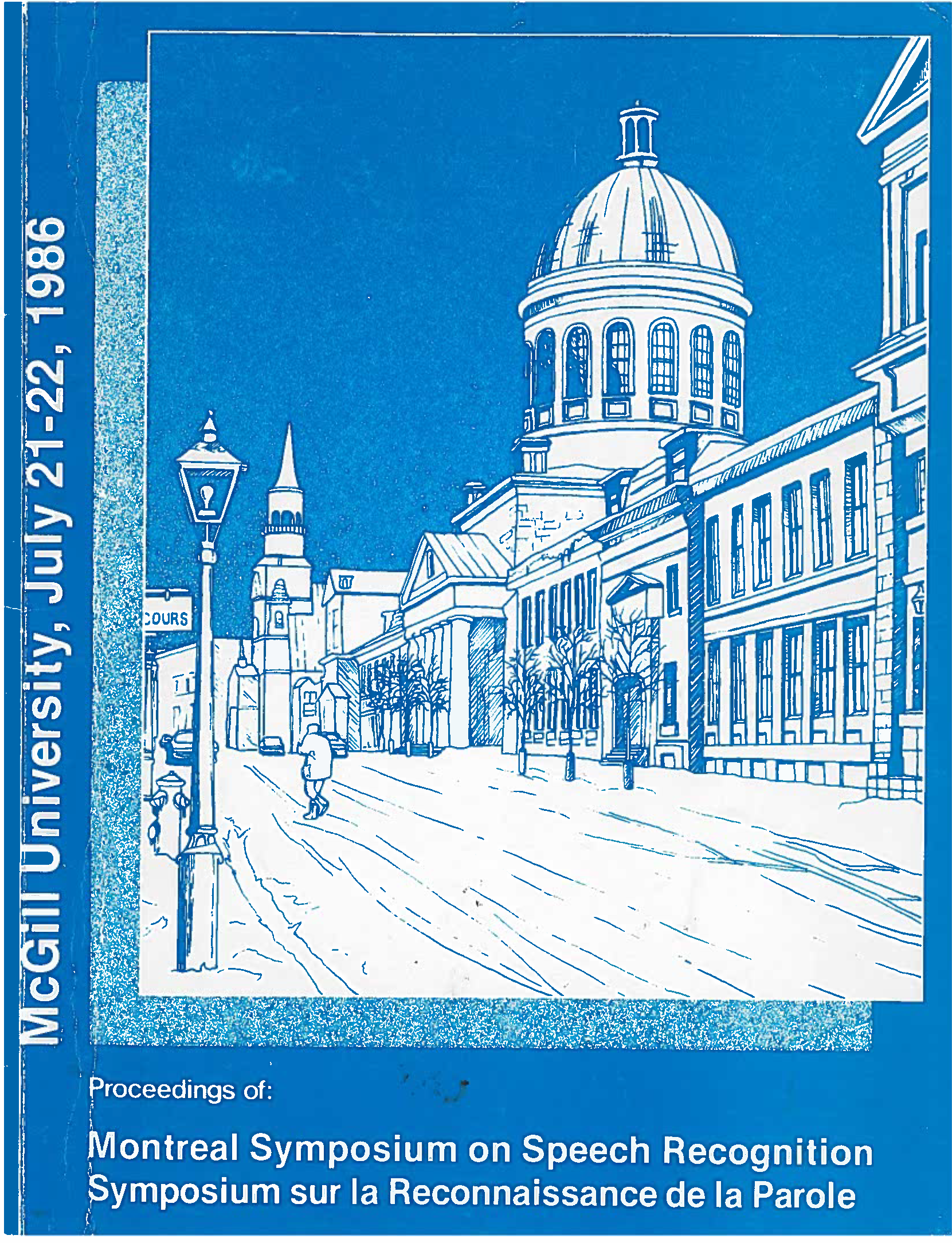Modelisation Autoregressive Evolutive et Reconnaissance de La Parole
Abstract
Le signal de parole est caractérisé par une alternance de zones spectralement assez stables, entrecoupées de régions transitoires. Les systèmes de reconnaissance proposés par le passé reposent sur des propriétés de stabilité spectrale et de stationnarité; ils obtiennent des performances mitigées pour les régions de transition. Une représentation de ces régions par modèle AR évolutif, valide sur toute la durée d'une région transitoire, est proposée. Les coefficients du modèle dépendent du temps et s'expriment sur une base limitée de fonction temporelles. Cette méthode de représentation est appliquée à la reconnaissance de segments transitoires C-V extraits de parole naturelle, et comparée à des méthodes plus classiques.
Additional Files
Published
How to Cite
Issue
Section
License
Author Licensing Addendum
This Licensing Addendum ("Addendum") is entered into between the undersigned Author(s) and Canadian Acoustics journal published by the Canadian Acoustical Association (hereinafter referred to as the "Publisher"). The Author(s) and the Publisher agree as follows:
-
Retained Rights: The Author(s) retain(s) the following rights:
- The right to reproduce, distribute, and publicly display the Work on the Author's personal website or the website of the Author's institution.
- The right to use the Work in the Author's teaching activities and presentations.
- The right to include the Work in a compilation for the Author's personal use, not for sale.
-
Grant of License: The Author(s) grant(s) to the Publisher a worldwide exclusive license to publish, reproduce, distribute, and display the Work in Canadian Acoustics and any other formats and media deemed appropriate by the Publisher.
-
Attribution: The Publisher agrees to include proper attribution to the Author(s) in all publications and reproductions of the Work.
-
No Conflict: This Addendum is intended to be in harmony with, and not in conflict with, the terms and conditions of the original agreement entered into between the Author(s) and the Publisher.
-
Copyright Clause: Copyright on articles is held by the Author(s). The corresponding Author has the right to grant on behalf of all Authors and does grant on behalf of all Authors, a worldwide exclusive license to the Publisher and its licensees in perpetuity, in all forms, formats, and media (whether known now or created in the future), including but not limited to the rights to publish, reproduce, distribute, display, store, translate, create adaptations, reprints, include within collections, and create summaries, extracts, and/or abstracts of the Contribution.


